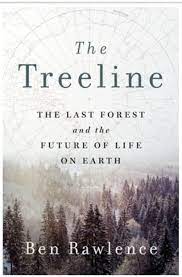Hope Others can Read "The Treeline; the Last Forrest and the Future of Life on Earth"
I've discussed this book by Ben Rawlence before here. Now that I've finished it I'm trying to get a handle on what it was about.
Rawlence traveled the circle around the Artic Circle. In each new country, he tried to travel north to its tree line. These countries, for the most part, have scientists studying the tree line and trying to put into a global wide perspective what they are seeing. That is, they try to determine the broader global warm affects the tree line and how the tree line, in turn, affects the rest of the globe.
To a person, the scientists who live and work along the Treeline in all those countries are pessimistic about our Mother Earth. While neither they, speaking many different languages, nor author Rawlence, wants to engage in hyperbole, certain hard facts cannot be ignored.
One fact is that the vast forest of sparsely inhabited territory that circles are the lungs of the earth. They contain a large percentage of the trees which soak up carbon dioxide and emit oxygen. Movement of the Treeline to the north as the climate warms opens new trees. However, trees to the south are dying from warmth and lack of rain. The net effect is a reduction of tree numbers. While there is evidence this entire cycle has occurred before, the evidence also shows it happened more slowly in previous times.
The author had a first-hand look at melting glaciers. What he saw was sobering. He finished his travels about two years ago and news since then is the melt rate has been increasing.
It has been known for a long time that the conditions necessary the plant life need to produce food for humans has a narrow window of conditions. Soil, water, temperature and sunlight cannot be too much or too little. Much of the book I'm discussing here is about the narrow conditions needed for forests to take hold. Once forests are gone the soil that sustained them can wash away. With the trees gone, there is less rain and the temps drop. Trees do not grown again until dust, moss, rain, temps and sun build it up again. Then seeds or roots have to find the area. This can take several thousand years.
The disappearing trees illustrate the precariousness of the world's food supply. It depends on 5' to 10" of soil combined with sun, rain, wind and temps. As the soil depletes, which is happening, what could be in store for eight billion humans.
That we cannot be certain of at this time.




Comments
Post a Comment